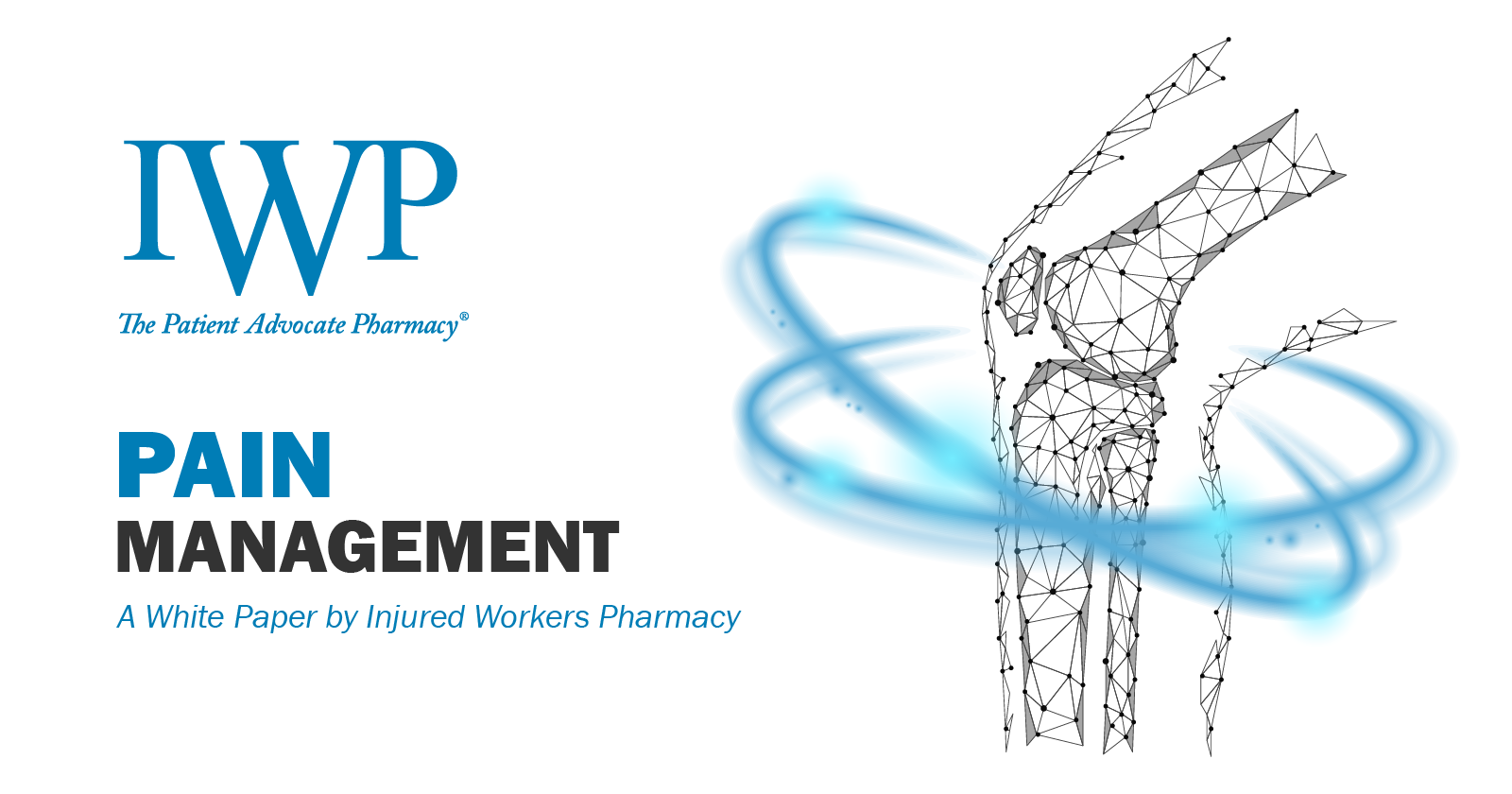Pain Management White Paper

IWP’s newest whitepaper explores the growing sphere of pharmacological and non-pharmacological options for managing pain in workers’ compensation. As treatment opportunities continue to expand for injured workers, a comprehensive approach to pain management is now becoming the norm. Topical agents such as creams, gels, and patches accompanied by non-pharmacological options, including physical therapies, are now mainstream in workers’ compensation. On the other hand, opioid utilization continues to decline significantly across most states as non-opioid alternatives take hold. While opioid limitations amongst the general populace are encouraged, specific patient populations, such as those with chronic or intractable pain, believe that access to such treatment is needed here and now to ensure unnecessary suffering does not occur. Medical experts and pain management advocates indicate that those with chronic or intractable pain are adversely impacted by one size fits all opioid restrictions, hoping exceptions can be added to the regulatory landscape. With new treatment options making their way through the pipeline, clinical stakeholders advocate for a balanced approach to treatment and to better cater to specialized patient populations and their unique needs who may have previously been overlooked.
Injured workers face varying degrees of difficulty in their recovery journey as they navigate the workers’ compensation system. While most workers hurt on the job optimally recover, there remain those who must confront pain that lingers for months, if not years. It is estimated that one in six American adults faces chronic pain in their daily lives.
Progressive strides in pain management have provided injured workers with numerous treatment choices to best handle their pain. Pharmacological options such as topicals (creams, gels, ointments) accompanied by non-pharmacological treatments such as physical therapy have created new standards in care for injured workers, emphasizing a comprehensive multi-disciplined approach to finding success in recovery.
However, for injured workers here and now facing chronic pain, current options may not provide sufficient relief, and such individuals back from engaging in everyday life. To meet the definition of chronic pain, most clinicians view such condition as lasting at least three months to indefinitely, creating a broad spectrum for managing the pain of injured workers. Within this spectrum, on the high end is intractable pain. Those experiencing intractable pain face higher severities of chronic pain and usually find mainstream treatment routes ineffective in mitigating their pain. To perform everyday tasks and find normalcy in daily routines, some intractable and high-level chronic pain patients have found success with opioid treatment.
In 2016 federal authorities at the Center for Disease Control (CDC) issued guidelines on opioid utilization for practitioners. Within the guidelines were calls for rapid tapering and a swift shift away from opioids to treat pain due to its potential for abuse. For the general population, these guidelines helped to ensure opioids would not fall into the wrong hands. Unfortunately, despite good faith efforts, the CDC guidelines consequently created a barrier to care for thousands of chronic and intractable pain patients. Suggested policies intended to help practitioners with patient decisions were misinterpreted as firm rules, leading many patients with chronic pain left to needlessly suffer. Although the CDC stated in 2019 that the guidelines were misapplied, 2016 guidance had, by that time, already created a stigma around opioid access, even for those suffering from excruciating pain levels.
Some states are taking action to address this gap in treatment by adding intractable pain as an exception to their respective state’s opioid protocols, increasing access for such patient populations. After witnessing particular pain populations struggle to access treatment, medical institutions such as the Mayo Clinic and even the US Health and Human Services Agency (HHS) have called for an equilibrium of sorts going forward with opioid prescribing. This balance on prescribing would continue strict limitations on opioid medication amongst the general public while reserving exceptions and pathways for chronic and intractable pain patients to attain the prescriptive regiment they require to handle their pain and improve quality of life standards.
Other Posts You Might Be Interested In
Subscribe to email updates
Stay up-to-date on what's happening at this blog and get additional content about the benefits of subscribing.


